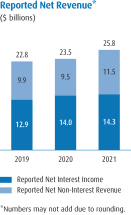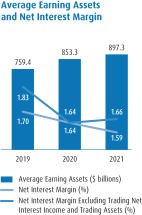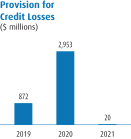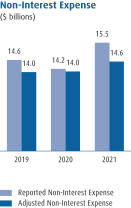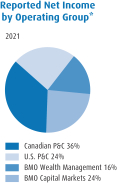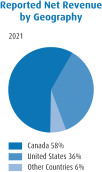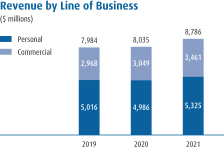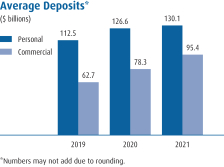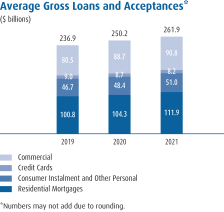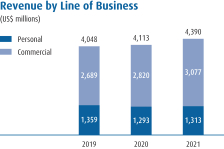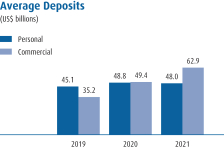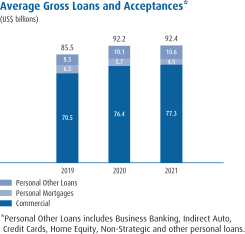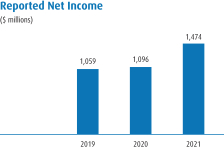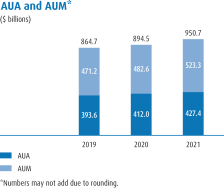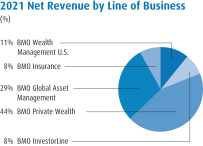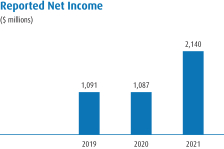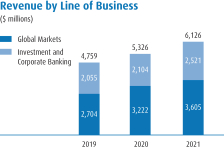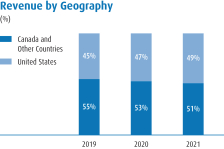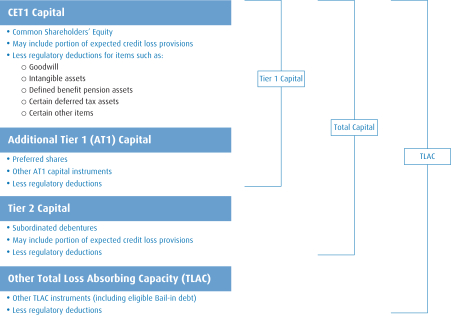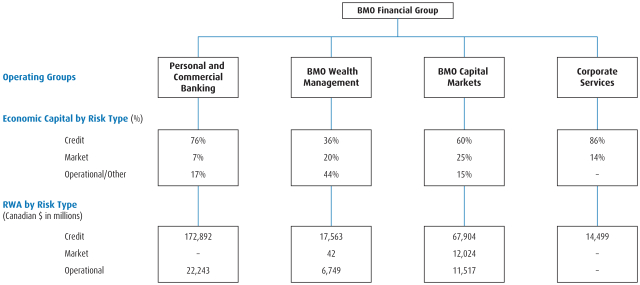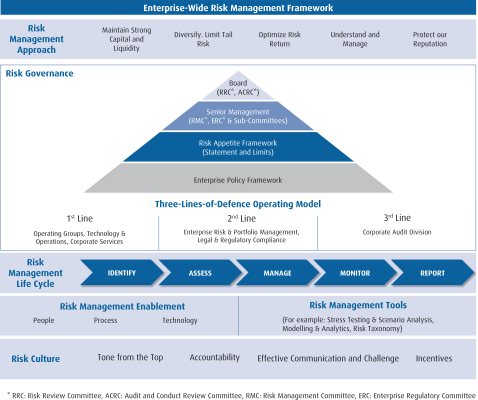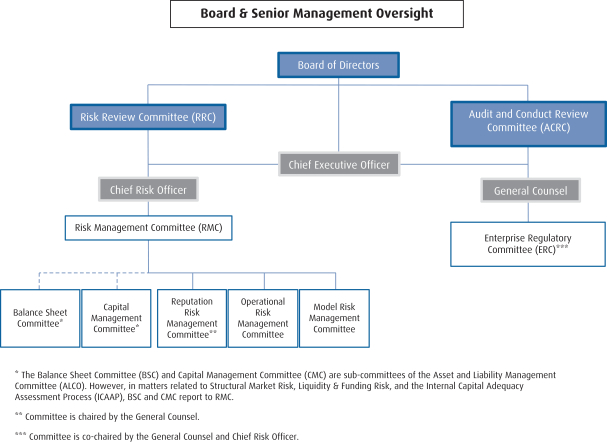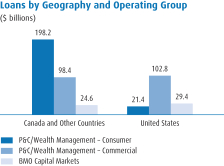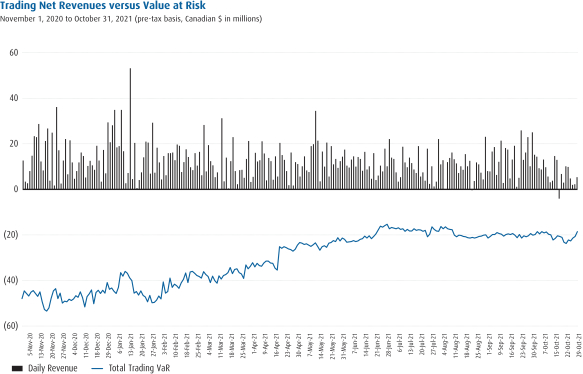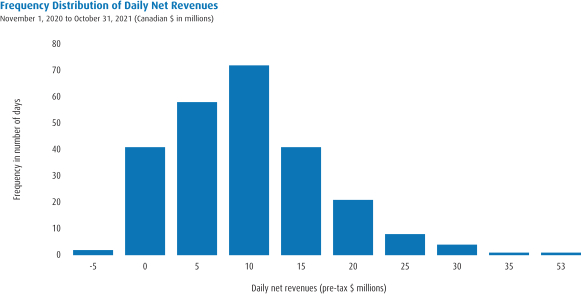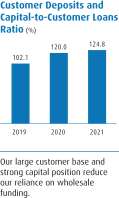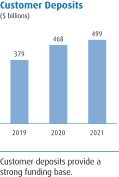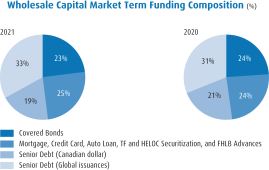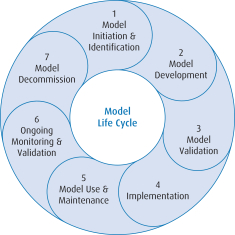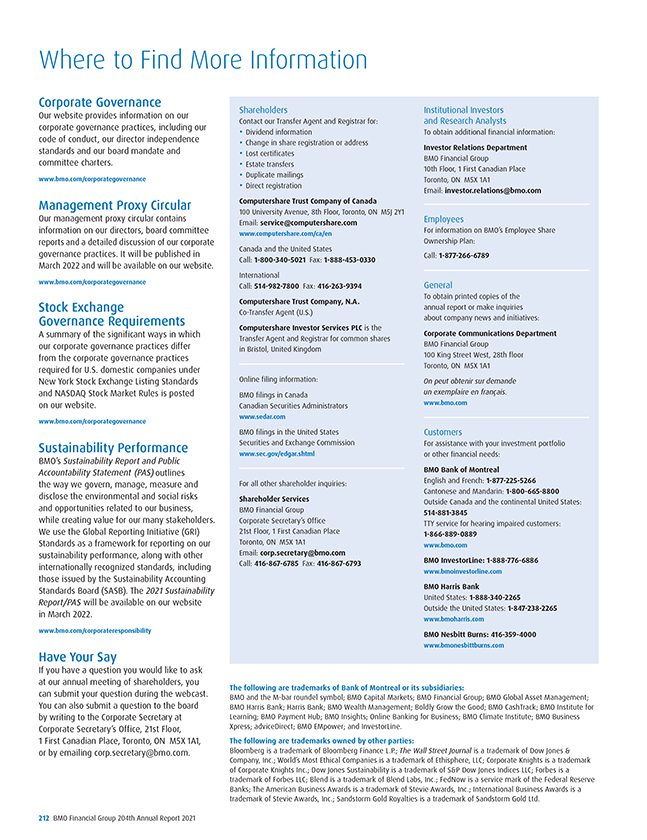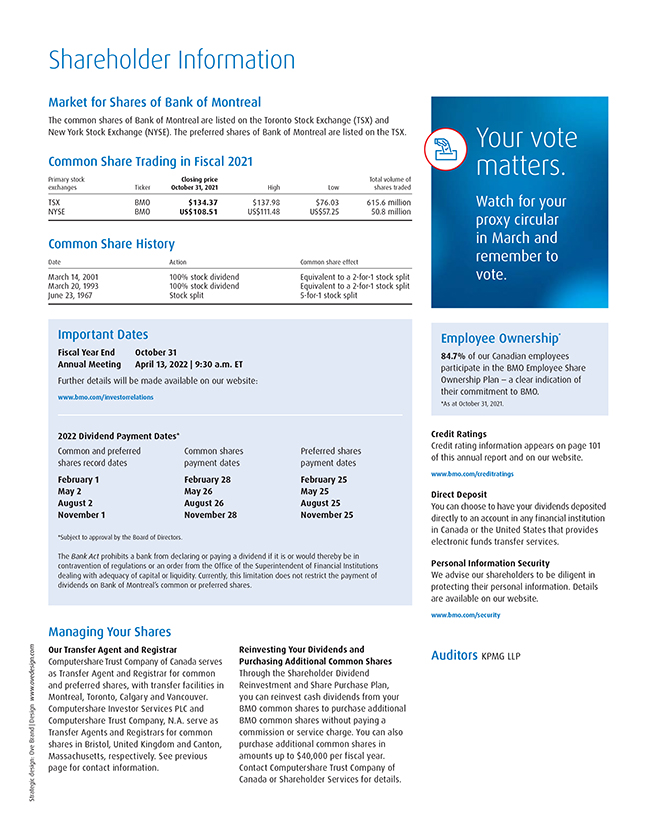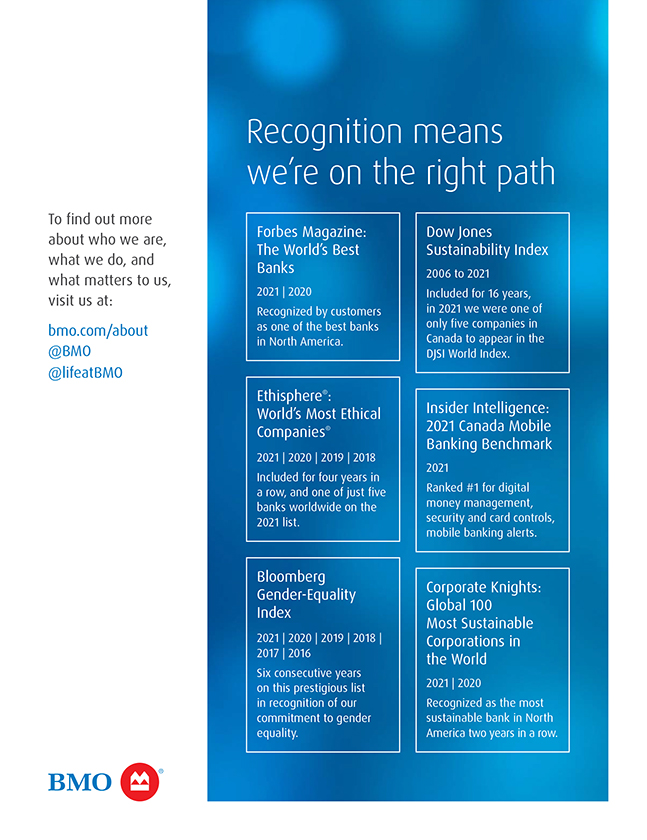| | Caution Regarding Forward-Looking Statements Bank of Montreal’s public communications often include written or oral forward-looking statements. Statements of this type are included in this document, and may be included in other filings with Canadian securities regulators or the U.S. Securities and Exchange Commission, or in other communications. All such statements are made pursuant to the “safe harbor” provisions of, and are intended to be forward-looking statements under, the United States Private Securities Litigation Reform Act of 1995 and any applicable Canadian securities legislation. Forward-looking statements in this document may include, but are not limited to, statements with respect to our objectives and priorities for fiscal 2022 and beyond, our strategies or future actions, our targets and commitments (including with respect to net zero emissions), expectations for our financial condition, capital position or share price, the regulatory environment in which we operate, the results of, or outlook for, our operations or for the Canadian, U.S. and international economies, and the COVID-19 pandemic, and include statements made by our management. Forward-looking statements are typically identified by words such as “will”, “would”, “should”, “believe”, “expect”, “anticipate”, “project”, “intend”, “estimate”, “plan”, “goal”, “commit”, “target”, “may”, “might”, “schedule”, “forecast” and “could” or negative or grammatical variations thereof. By their nature, forward-looking statements require us to make assumptions and are subject to inherent risks and uncertainties, both general and specific in nature. There is significant risk that predictions, forecasts, conclusions or projections will not prove to be accurate, that our assumptions may not be correct, and that actual results may differ materially from such predictions, forecasts, conclusions or projections. The uncertainty created by the COVID-19 pandemic has heightened this risk, given the increased challenge in making assumptions, predictions, forecasts, conclusions or projections. We caution readers of this document not to place undue reliance on our forward-looking statements, as a number of factors – many of which are beyond our control and the effects of which can be difficult to predict – could cause actual future results, conditions, actions or events to differ materially from the targets, expectations, estimates or intentions expressed in the forward-looking statements. The future outcomes that relate to forward-looking statements may be influenced by many factors, including, but not limited to: general economic and market conditions in the countries in which we operate, including labour challenges; the severity, duration and spread of the COVID-19 pandemic, and possibly other outbreaks of disease or illness, and its impact on local, national or international economies, as well as its heightening of certain risks that may affect our future results; information, privacy and cyber security, including the threat of data breaches, hacking, identity theft and corporate espionage, as well as the possibility of denial of service resulting from efforts targeted at causing system failure and service disruption; benchmark interest rate reforms; technological changes and technology resiliency; political conditions, including changes relating to, or affecting, economic or trade matters; climate change and other environmental and social risk; the Canadian housing market and consumer leverage; inflationary pressures; global supply-chain disruptions; changes in monetary, fiscal, or economic policy; changes in laws, including tax legislation and interpretation, or in supervisory expectations or requirements, including capital, interest rate and liquidity requirements and guidance, and the effect of such changes on funding costs; weak, volatile or illiquid capital or credit markets; the level of competition in the geographic and business areas in which we operate; judicial or regulatory proceedings; the accuracy and completeness of the information we obtain with respect to our customers and counterparties; failure of third parties to comply with their obligations to us; our ability to execute our strategic plans and to complete proposed acquisitions or dispositions, including obtaining regulatory approvals; critical accounting estimates and the effects of changes to accounting standards, rules and interpretations on these estimates; operational and infrastructure risks, including with respect to reliance on third parties; changes to our credit ratings; global capital markets activities; the possible effects on our business of war or terrorist activities; natural disasters and disruptions to public infrastructure, such as transportation, communications, power or water supply; and our ability to anticipate and effectively manage risks arising from all of the foregoing factors. We caution that the foregoing list is not exhaustive of all possible factors. Other factors and risks could adversely affect our results. For more information, please refer to the discussion in the Risks That May Affect Future Results section, and the sections related to credit and counterparty, market, insurance, liquidity and funding, operational non-financial, legal and regulatory, strategic, environmental and social, and reputation risk, in the Enterprise-Wide Risk Management section, all of which outline certain key factors and risks that may affect our future results. Investors and others should carefully consider these factors and risks, as well as other uncertainties and potential events, and the inherent uncertainty of forward-looking statements. We do not undertake to update any forward-looking statements, whether written or oral, that may be made from time to time by the organization or on its behalf, except as required by law. The forward-looking information contained in this document is presented for the purpose of assisting shareholders and analysts in understanding our financial position as at and for the periods ended on the dates presented, as well as our strategic priorities and objectives, and may not be appropriate for other purposes. Material economic assumptions underlying the forward-looking statements contained in this document are set out in the Economic Developments and Outlook section, as well as in the Allowance for Credit Losses section. Assumptions about the performance of the Canadian and U.S. economies, as well as overall market conditions and their combined effect on our business, are material factors we consider when determining our strategic priorities, objectives and expectations for our business. In determining our expectations for economic growth, we primarily consider historical economic data, past relationships between economic and financial variables, changes in government policies, and the risks to the domestic and global economy. | | |
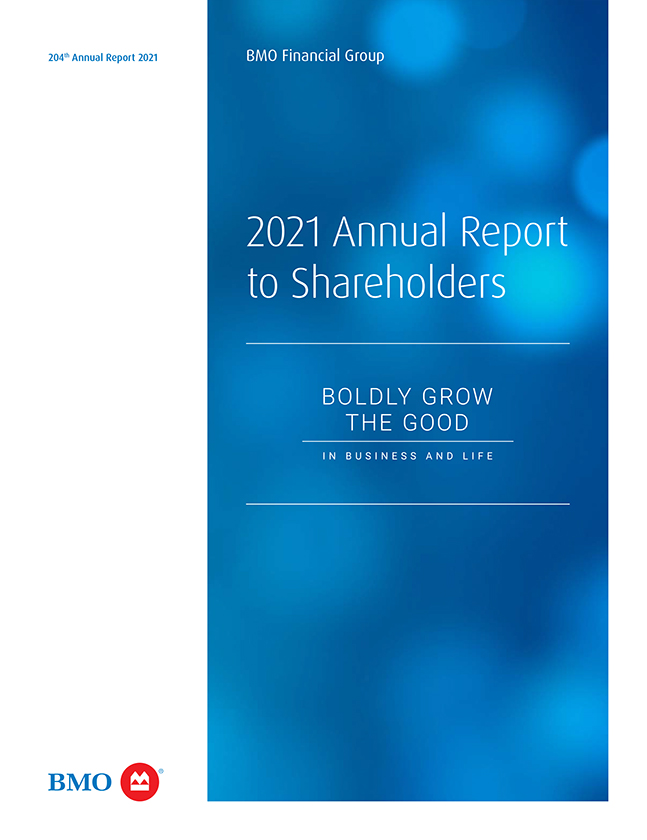
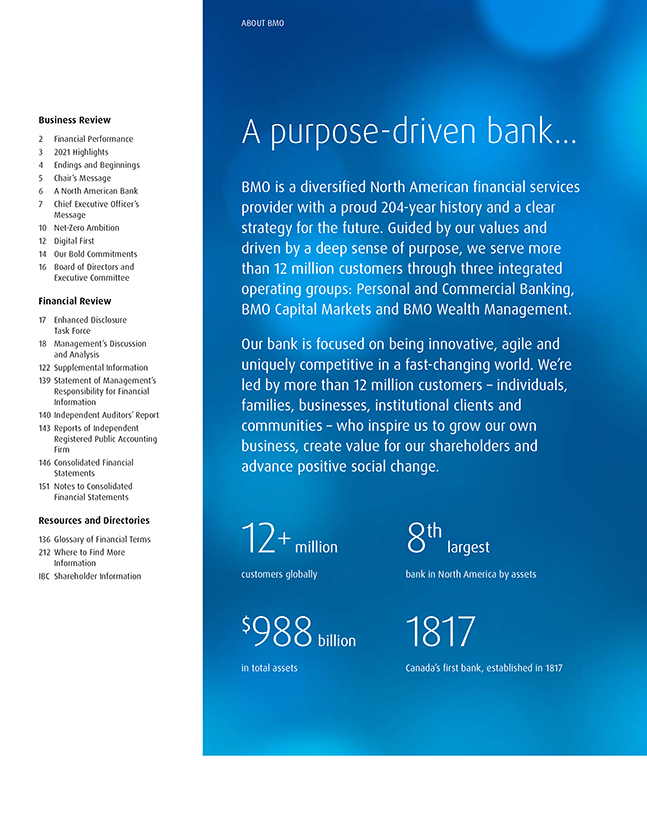
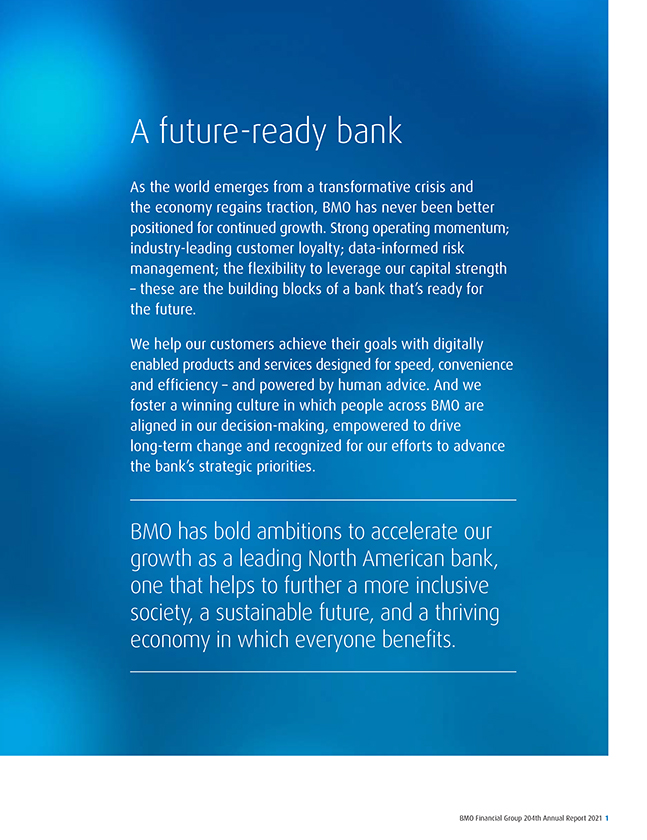
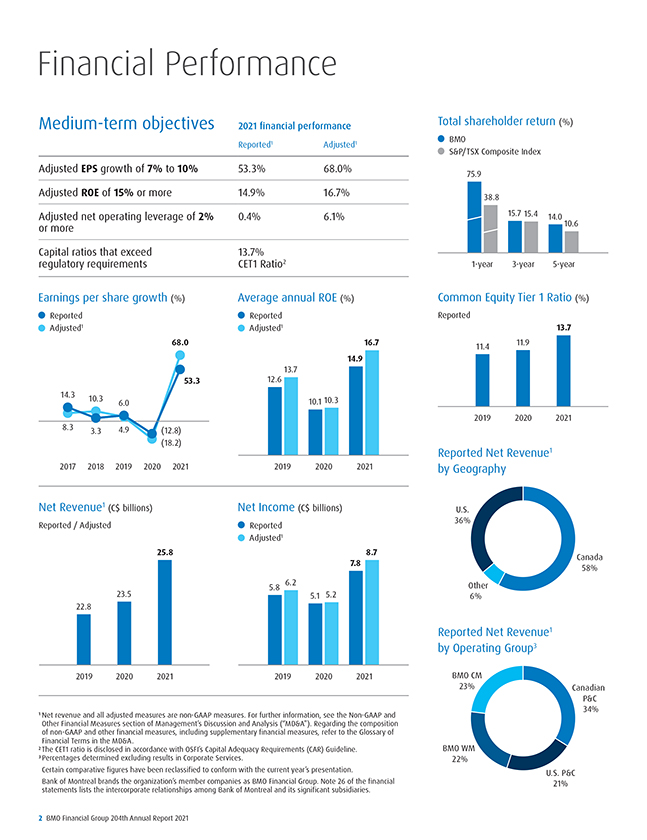
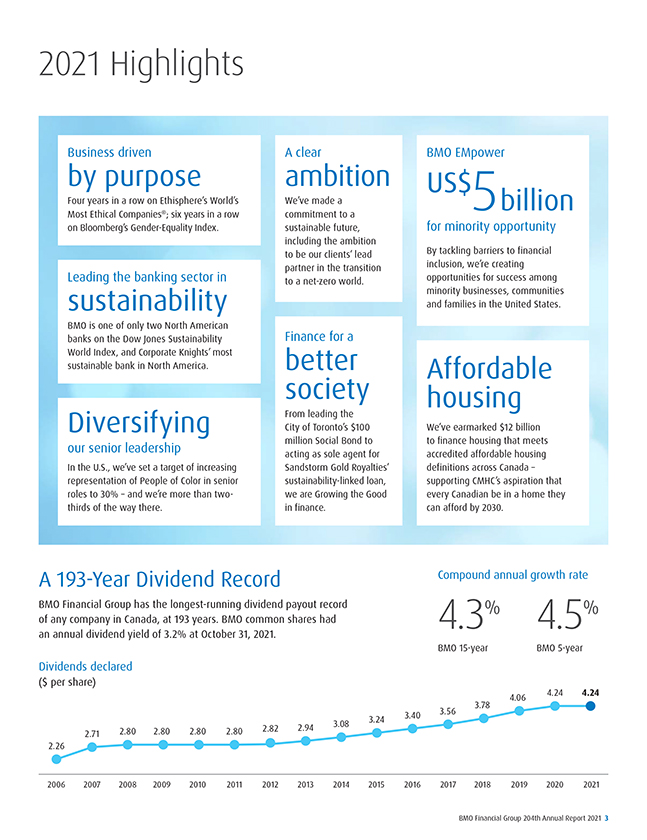

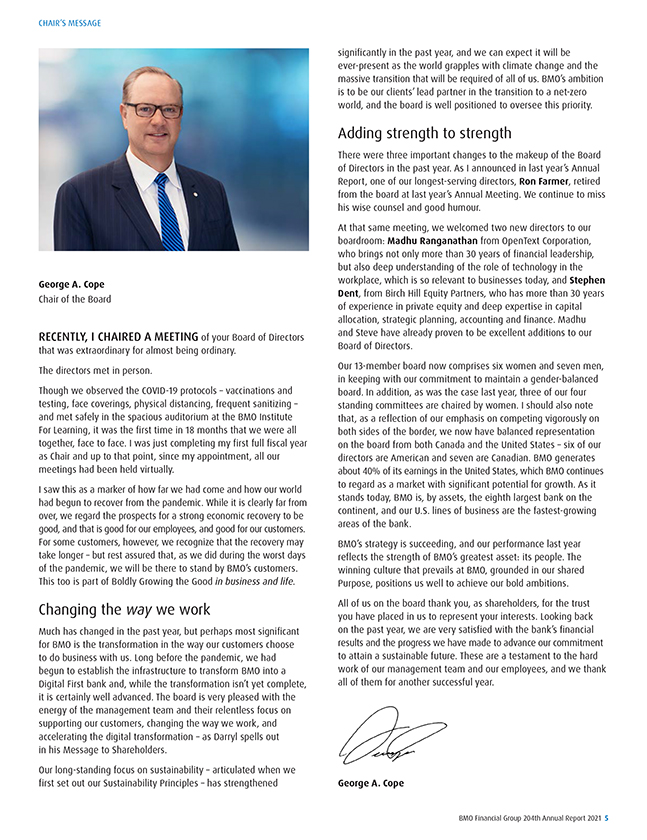
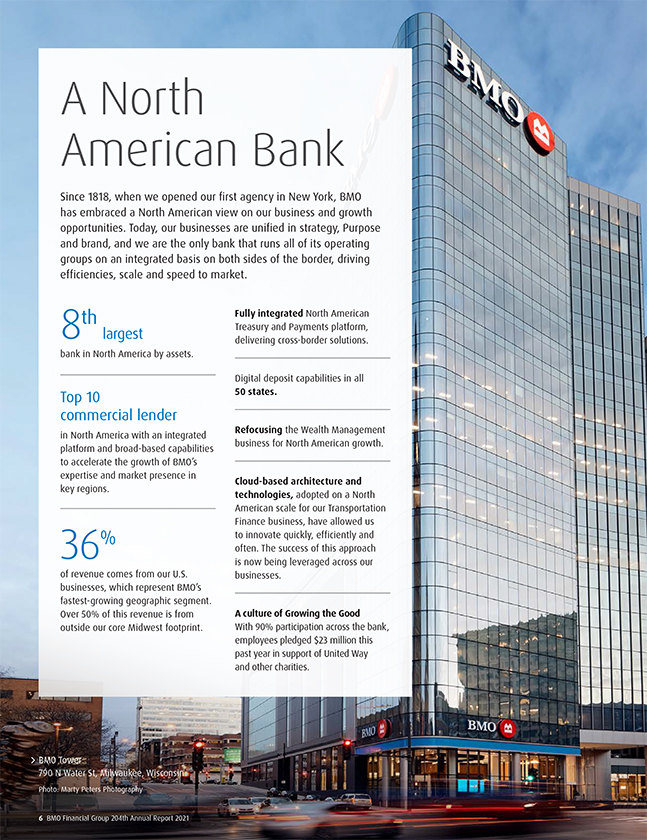
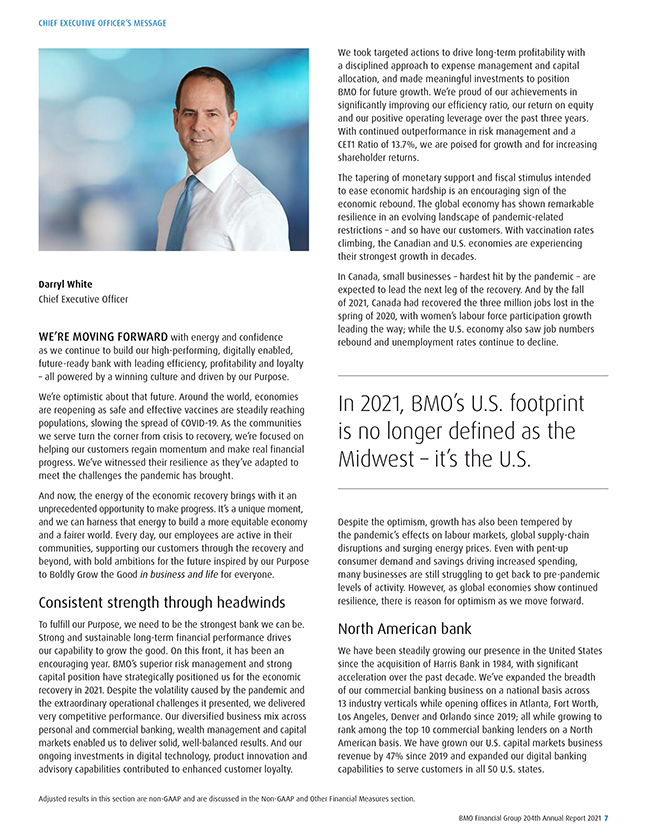
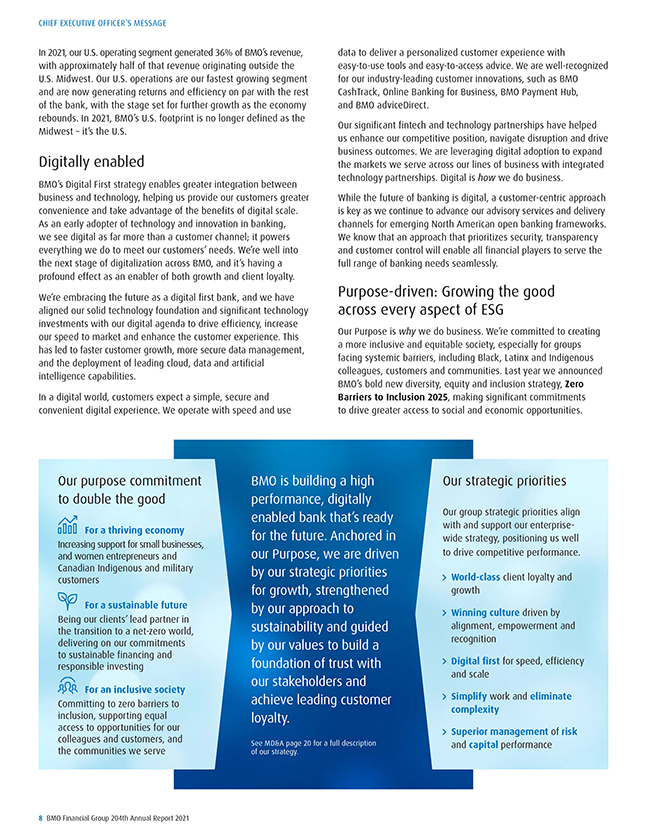
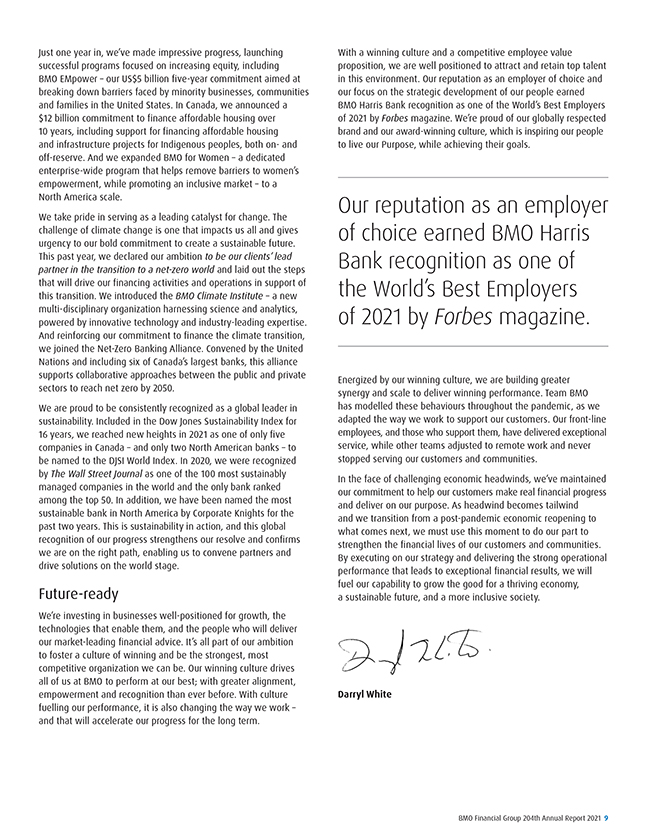
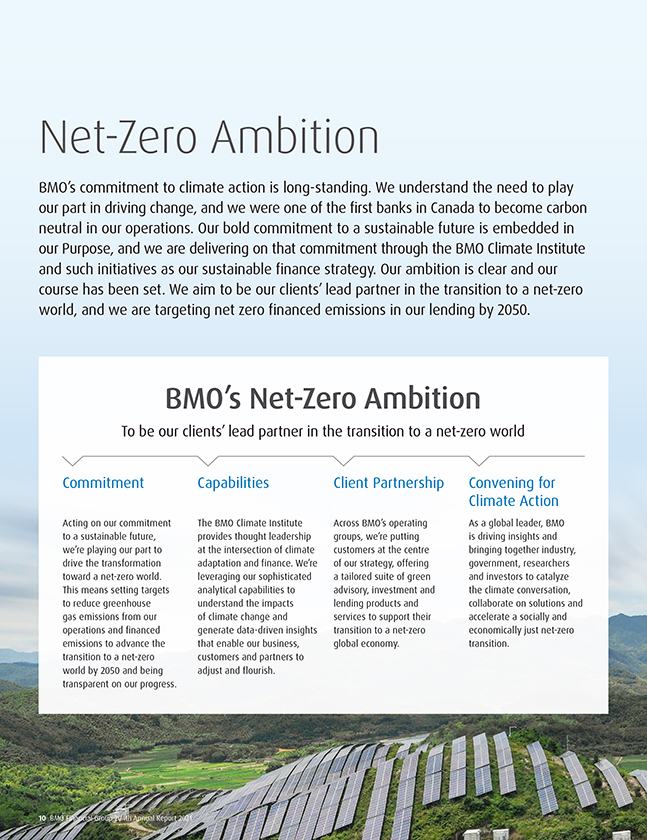
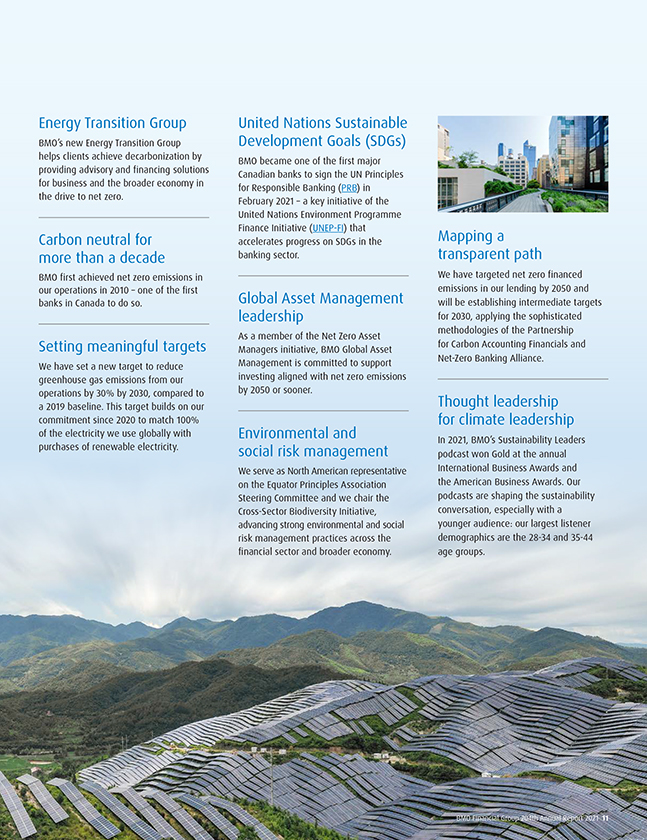



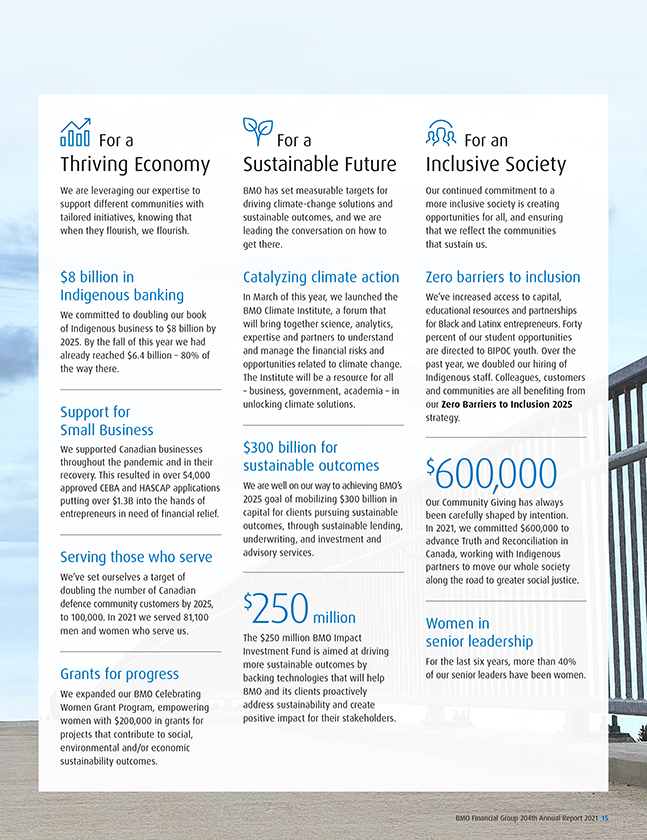
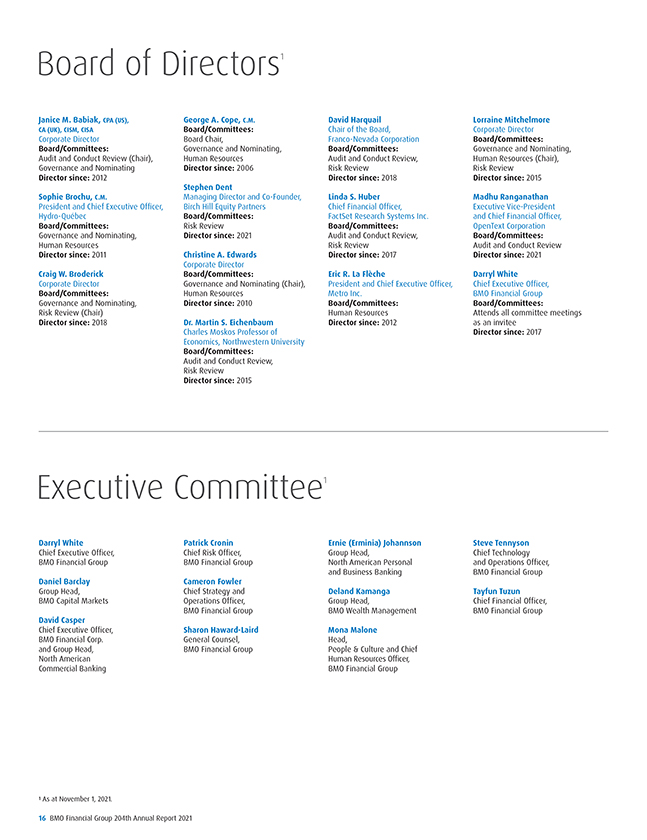
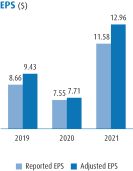
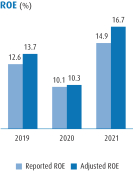


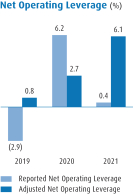
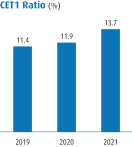
 , our first annual Indigenous Partnerships and Progress Report, highlighting the partnership with Indigenous communities and BMO’s Indigenous Advisory Council to further education, employment and economic empowerment.
, our first annual Indigenous Partnerships and Progress Report, highlighting the partnership with Indigenous communities and BMO’s Indigenous Advisory Council to further education, employment and economic empowerment.